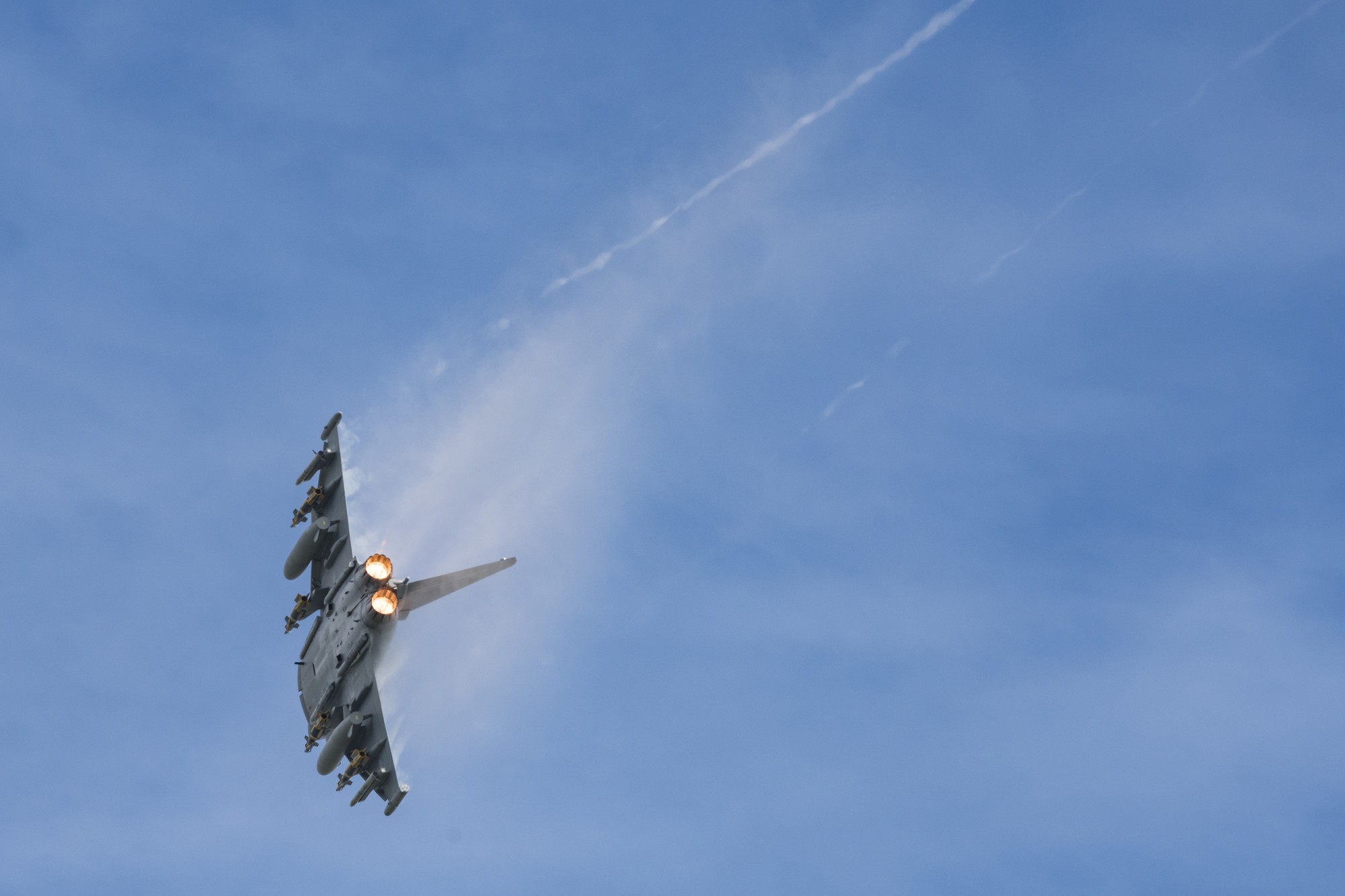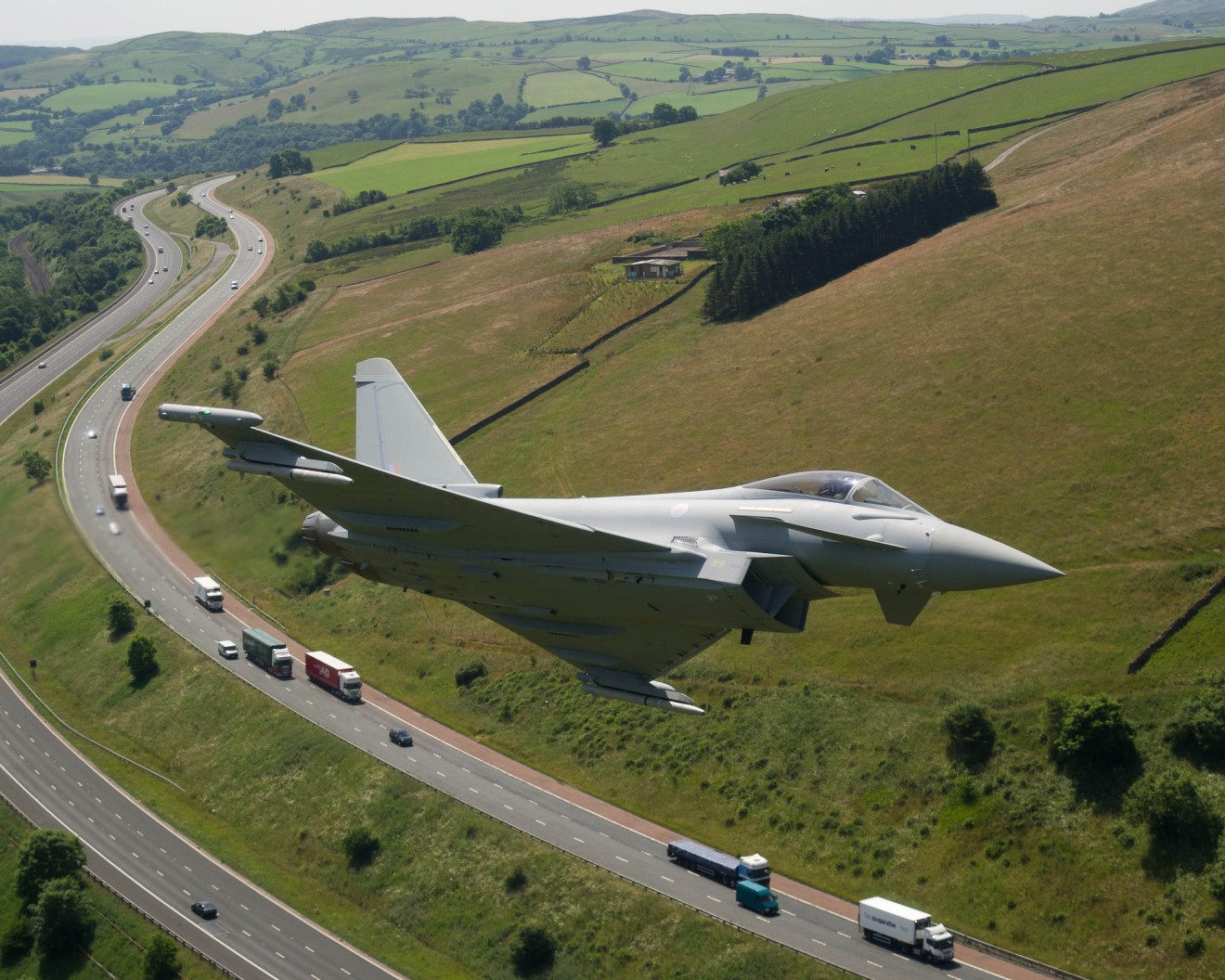
‘After making a rapid climb to 40,000ft I slow right down to a point where we can barely fly and then slam the engines into full throttle. If there’s anything wrong with the engines this is where you’re going to find out…
‘For me this is one of the most critical test points because at 40,000ft you’d typically be flying at 0.9 Mach, but we are back at 0.5 Mach — that’s only 150 knots, which is not much more than landing speed. At this height the air is only a 10th of the density compared to ground level. Even in full reheat the aircraft struggles to stay level. You are in a very challenging part of the envelope. We’re flying as slow as we can and then we slam the engines! (That’s pilot-speak for mishandling them in a very severe way).
‘It’s all part of ensuring the performance of the engine is guaranteed.
‘It’s extreme flying but in a sense, this is the whole point of a first flight or Production Flight Acceptance Test (PFAT). We are giving the aircraft a thorough workout through most of the envelope — at high speed and low speed and we slam the engines in a way that would not happen in normal flight.
‘We try to make the engines surge at altitude and then slam the throttles in and out of reheat. If you did that in an old jet they’d cough, splutter and stall.
‘The fun starts even before we leave the ground because as you taxi out, I take the nose wheel steering out to make sure the flight control system is okay. No pilot would ever do that on purpose. Once I’m happy everything is good, I take off and pull straight into a steep reheat climb.
“We have to check the maximum and minimum G, that’s usually around +7g and -3g, at high supersonic flight to give the flight controls a full workout. That’s phenomenal performance. You’re basically going to the limits that the aircraft was designed for. You’re doing things with the aircraft that would never normally be done by the aircrew, except perhaps in real combat situations. Full stick rolls, where you slam the stick hard to full deflection and the jet aggressively rolls and pitches as we do it. Then it recovers.
‘At 25,000ft I shut the engines off one at a time. It’s the only time in normal service it occurs.
'We shut it off for a minute and then relight it again. Then you drop down to about 10,000ft and fly upside down for 30 seconds. Even a display pilot doesn’t normally do it for that long. Then I drop to 2,000ft and slam the engines again. This is one of the most dangerous phases because if anything was to go wrong you don’t have a lot of time to react.

‘Even the first landing is extreme. I deploy the parachute and stamp on the brakes, which, I can assure you, is not a normal pilot technique but it heats the brakes and tests the anti-lock system. Everything is beyond what you would do on a normal flight, but within cleared envelope of the aircraft.
‘A PFAT is a high workload flight and it’s demanding for a pilot. Is it the ultimate test drive – I guess so. There’s constant noise and vibration and all the time you’re making notes, recording times, and moving on from test point to test point. It’s a discipline and one that’s carried out by every partner nation. There are more than 100 test points, but you can split it into two parts: the aeromechanical, like the engines and controls, and then the systems and avionics.
‘Testing the airframe and engines takes you to the edges of the design envelope which is the exciting test pilot stuff you often read about. You could look at it another way; we are testing to ensure the aircraft is safe and that there aren’t any product quality issues.
‘The point of the whole exercise is to put the engines, the flight controls and things like the cockpit pressurization and anti-g protection systems through to the extremes of their cleared envelopes to make sure they work. We have a very strict schedule to follow but, in essence, what we are trying to do is say the aircraft is built perfectly. It’s also about learning and improving.
'As a test pilot you are the tip of the iceberg – the work that has got you there by teams of people is vast. Another way to look at the PFAT is that it’s the pilot’s quality control stamp in what is otherwise an extremely complex engineering process. It’s the aircrew saying the aircraft is good enough to give to the customer.’
Then I drop to 2,000ft and slam the engines again. This is one of the most dangerous phases because if anything was to go wrong you don’t have a lot of time to react.
